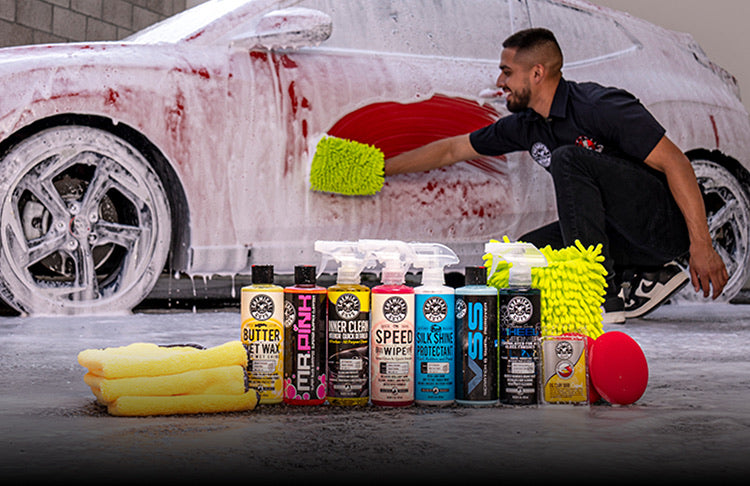PRO QUALITY CAR CARE MADE EASY
Join millions of car enthusiasts and professionals globally who trust our cutting-edge.
easy-to-use car care products to protect,restore,and enhance their vehicles.

The pursuit of automotive perfection often begins not with high-tech machinery, but with a humble collection of carefully selected cleaning supplies. For enthusiasts and careful vehicle owners alike, understanding and utilizing the right car wash products is the bedrock of preserving a vehicle’s finish, safeguarding its value, and ensuring that showroom-new look lasts far beyond the initial purchase. Moving past the outdated methods of using household soaps and abrasive rags is the critical first step toward scratch-free, deep-cleaning success. This transition involves adopting a systematic approach and an arsenal of specialized tools, each designed to tackle a specific type of grime on a specific surface, from the delicate clear coat to the rugged rubber of the tires.
A world of difference separates a quick rinse from a meticulous detailing session, and that difference is largely defined by the physical tools employed. At the core of a professional-level wash is the Two-Bucket Method, a simple yet revolutionary technique that dramatically minimizes the risk of inflicting swirl marks—tiny scratches that dull the paint’s reflection. The principle is straightforward: one bucket contains the soapy wash solution, and the second bucket holds only clean rinse water.
The essential washing tool itself should be a plush wash mitt or pad, ideally made from a material designed to gently lift and encapsulate dirt particles away from the paint surface. Materials like synthetic wool or thick, soft microfiber are excellent choices because they offer a deep pile where grit can retreat, preventing it from being dragged across the finish. After washing a section of the car, the mitt is thoroughly rinsed in the clean water bucket, releasing trapped contaminants before being reloaded with soap. This vital rinsing step prevents cross-contamination and is the reason this method is universally championed by detailing experts.
Supporting these core items are specialty brushes and tools for areas that require more aggressive agitation. Wheel brushes are indispensable, as wheel and tire grime—a mix of brake dust, road tar, and grease—is one of the most abrasive contaminants a vehicle encounters. These brushes must be stiff enough to break down tough deposits, yet flexible enough to reach into lug nut recesses and around caliper assemblies. Crucially, these wheel-dedicated tools must never touch the painted body panels. This separation of tools for different tasks is a golden rule in proper car care.
The cleaning solutions themselves are just as important as the physical tools. The primary agent for the body panels should be a pH-balanced car cleansing liquid. Unlike harsh degreasers or common household liquids, a dedicated vehicle wash solution is formulated to be tough on road film and dirt, yet gentle enough not to strip away protective layers like wax or sealant. High-quality solutions generate a rich, slick lather that acts as a lubricant, allowing the wash mitt to glide smoothly over the paint, minimizing friction.
For a deeper pre-wash, many experts utilize a foam cannon or foamer. This equipment mixes the cleansing liquid with pressurized water and air to create a thick, clinging foam that is sprayed onto the dry vehicle before any physical contact is made. This “pre-soak” stage allows the cleansing agents to dwell on the surface and loosen a significant amount of surface dirt, which then runs off when rinsed. This technique dramatically reduces the amount of contamination that needs to be scrubbed by hand, making the contact wash significantly safer.
Beyond the paint, other specialized solutions are necessary. Tire and wheel cleaners often contain specialized, non-acidic formulas to safely dissolve the ferrous particles (brake dust) and stubborn rubber residue without damaging the metal or the tire walls. For glass, a streak-free cleaner is essential, as residue left by all-purpose soaps or inferior cleaners can impair visibility and ruin the aesthetic of a clean vehicle.
A car wash is not complete until the vehicle is properly dried and protected. Improper drying is the second leading cause of swirl marks, often resulting from simply letting the water air-dry (leading to mineral spots) or using towels that are not specifically designed for automotive finishes. The professional choice is a large, absorbent drying towel, typically a waffle-weave or twisted-loop microfiber material. These towels are engineered to soak up huge volumes of water with minimal passes, reducing the time spent rubbing the surface. The technique is often to “blot” or gently drag the towel rather than rub vigorously.
Finally, the protection phase is what gives a wash its longevity and depth of shine. After cleaning and drying, a high-quality protectant is applied. This can be a traditional paste wax, a liquid paint sealant, or a modern ceramic spray product. These products form a sacrificial layer over the clear coat, defending the finish against environmental hazards like UV radiation, road grime, bird droppings, and industrial fallout. This protective layer not only enhances the depth and gloss of the paint but also makes future cleaning much easier, as contaminants struggle to adhere to the slick surface.
Building a comprehensive arsenal of car care supplies is an investment, but it is one that pays dividends in the form of a flawlessly maintained vehicle. By following a methodical process—pre-soak, two-bucket wash with specialized tools, safe drying, and protective sealing—any dedicated owner can achieve and maintain a professional-level finish at home, ensuring their vehicle remains a point of pride and a protected asset for years to come.